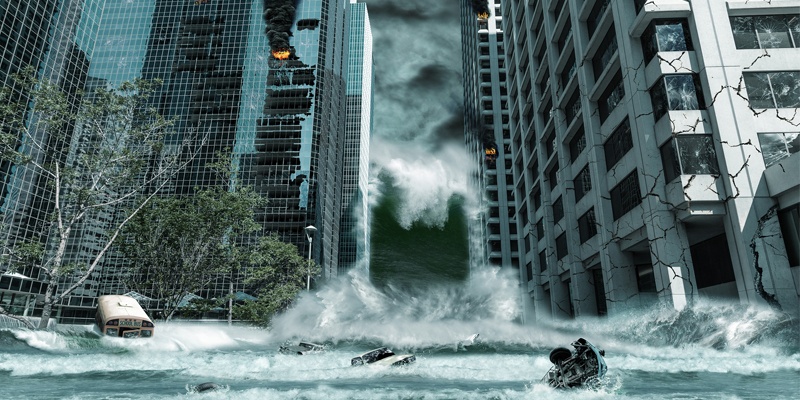 By now you are well versed in the ways Smart Cities operate, knowing all of the ways they contribute to a more efficient, safer, and connected community. You also know how to protect a Smart City, how vulnerable it can be to cyber crimes, and the best ways to prevent or fight them. But what about Mother Nature? Violent and often unpredictable, a city can have every method of cyber protection in place and still be vulnerable when an unexpected natural disaster throws it off the grid without warning. So is a city truly smart if it hasn't developed methods of protecting itself against the very environment it's built upon?The ideal community pulls together during the aftermath of a natural disaster, rallying around citizens and ensuring that everyone is safe and secure. In reality, unfortunately, there is often a spike in crime from individuals looking to take advantage of security systems that have fallen offline and public safety services that are stretched too thin. Many businesses end up suffering financial losses during natural disasters, not only because of flooding, fire, or power loss, but also due to theft or vandalism while their defenses were down. Following the simple steps below will help protect your business and network during a natural disaster.
By now you are well versed in the ways Smart Cities operate, knowing all of the ways they contribute to a more efficient, safer, and connected community. You also know how to protect a Smart City, how vulnerable it can be to cyber crimes, and the best ways to prevent or fight them. But what about Mother Nature? Violent and often unpredictable, a city can have every method of cyber protection in place and still be vulnerable when an unexpected natural disaster throws it off the grid without warning. So is a city truly smart if it hasn't developed methods of protecting itself against the very environment it's built upon?The ideal community pulls together during the aftermath of a natural disaster, rallying around citizens and ensuring that everyone is safe and secure. In reality, unfortunately, there is often a spike in crime from individuals looking to take advantage of security systems that have fallen offline and public safety services that are stretched too thin. Many businesses end up suffering financial losses during natural disasters, not only because of flooding, fire, or power loss, but also due to theft or vandalism while their defenses were down. Following the simple steps below will help protect your business and network during a natural disaster.
First, develop a disaster management plan. This is as simple as doing a test run with your employees to make sure they all know their role in preparing for a disaster. Refer to the National Institute of Standards and Techology to find numerous resources to help you construct a plan that will keep safety first, placing an emphasis on safeguarding your staff before all else.
Once your workforce is secure, check on your procedures for backing up your network. Make sure your alternate sites are reliable and have been tested, checking the backup data as well to make sure it is being captured as it should be. As a safety precaution that can save a business, this should be done routinely whether preparing for a natural disaster or not.
For your technology investments, it is always a good idea to consider moving them to higher ground. If flooding is expected, it is a simple way to protect your property and keep systems running if at all possible. Moving all uninterruptible power sources such as generators or batteries to safe locations will also help to keep your network online and any video surveillance systems and alarms running if the power fails.
Dealing with the aftermath of a disaster, only to return to your business and discover that your data did not back up properly? There are several applications available you can download to retrieve lost data on servers if they are not physically damaged, and it is essential that you do not download any new data onto your server until old data is recovered. Saving new data has the potential to overwrite old files and will make them unretrievable.
Taking the steps above are just the beginning of developing a plan in the event of a disaster. Making sure your personnel and building are safe will be important, but with so many businesses relying on technology to continue functioning, making sure your data is safe will ensure you and your personnel have a business to return to when life returns to normal.
